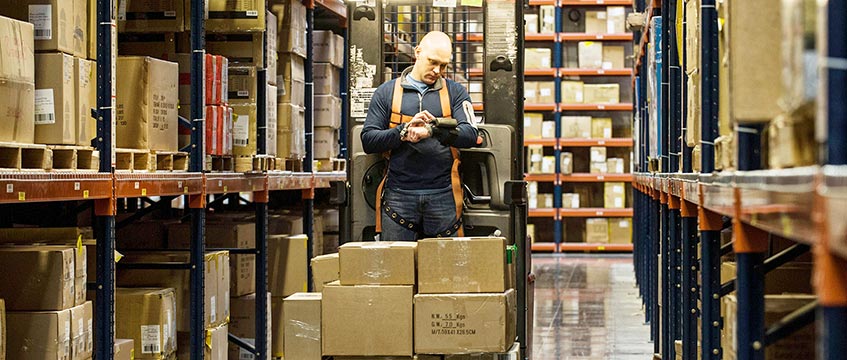Demand for big box warehousing stays steady during lockdown
There are more than 50 occupier requirements circulating for big box spaces offering more than 100,000 sq ft in the UK, according to the latest research from CBRE.
CBRE said take-up in the market has remained steady. Many NHS enquiries are targeting smaller spaces, while some food retailers and third-party logistics operators are looking for larger units. Buildings with chilled and frozen capability are in demand, as well as fitted buildings with racking and sprinkler systems.
Short-term or flexible leases are being sought to accommodate stockpiling of non-perishable goods that are not selling due to the temporary closure of shops.
There are more than 50 occupier requirements circulating for big box spaces offering more than 100,000 sq ft in the UK, according to the latest research from CBRE.
CBRE said take-up in the market has remained steady. Many NHS enquiries are targeting smaller spaces, while some food retailers and third-party logistics operators are looking for larger units. Buildings with chilled and frozen capability are in demand, as well as fitted buildings with racking and sprinkler systems.
Short-term or flexible leases are being sought to accommodate stockpiling of non-perishable goods that are not selling due to the temporary closure of shops.
Retailers such as M&S, Ocado and Aldi are among those reportedly seeking additional warehouse space for short-term needs and as long-term strategic investments.
Emerge stronger
However, Jonathan Compton, senior director of industrial and logistics at CBRE, pointed out that the sector is not immune to requests for rent deferrals from struggling high street retailers.
Compton said: “The logistics sector has the potential to emerge even stronger following this challenging period.
“We anticipate higher demand for storage facilities across the UK, particularly from online retailers and the third-party logistics operators as businesses reshape their property supply chains to meet the evolving needs of consumers.
“Nevertheless, the sector is not escaping the current disruption with some landlords receiving requests for rent deferrals, especially from struggling high street retailers. Some owner occupiers are also exploring selling their physical assets through sale and leasebacks to shore up balance sheets in the short-term.”
Online retail dominates Q1 take-up
At a sector level, online retail accounted for the largest proportion of take-up in the UK’s logistics market during Q1 2020, tallying 34%.
The food retail sector accounted for 20.8% of take-up in Q1, with grocery shopping on the rise at the end of March as the coronavirus lockdown began.
CBRE noted that some major supermarkets are reoccupying previously vacated space to meet demand, and CBRE expects the online penetration of grocery sales to increase from a previous level of around 6%.
How the market fared in Q1
The UK logistics market achieved total take-up of 6.26m sq ft in Q1 2020, compared with 4.41m sq ft during the same quarter in the previous year.
CBRE said 11 deals completed during the quarter, a 39% decrease compared with Q1 2019 when 18 deals closed.
However, the average unit size in Q1 2020 was much larger at 568,940 sq ft, compared with 244,954 sq ft in the previous year.
Total availability at the end of Q1 2020 was 25.73m sq ft, of which 11.44m sq ft comprised of new speculative developments. This represented a UK vacancy rate of 5.3%.
Yorkshire and the North East proved the most attractive region, accounting for 46.7% of UK take-up for the quarter, followed by the East Midlands (38.3%), North West (10.2%) and the South East (4.8%).
To send feedback, e-mail pui-guan.man@egi.co.uk or tweet @PuiGuanM or @estatesgazette











